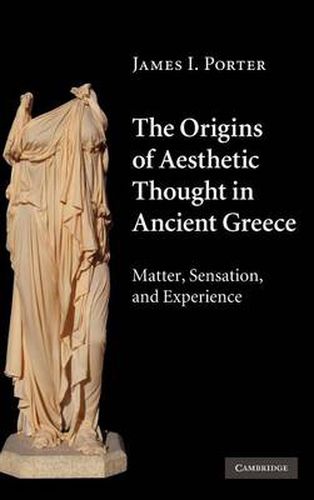Readings Newsletter
Become a Readings Member to make your shopping experience even easier.
Sign in or sign up for free!
You’re not far away from qualifying for FREE standard shipping within Australia
You’ve qualified for FREE standard shipping within Australia
The cart is loading…






This is the first modern attempt to put aesthetics back on the map in classical studies. James I. Porter traces the origins of aesthetic thought and inquiry in their broadest manifestations as they evolved from before Homer down to the fourth century and then into later antiquity, with an emphasis on Greece in its earlier phases. Greek aesthetics, he argues, originated in an attention to the senses and to matter as opposed to the formalism and idealism that were enshrined by Plato and Aristotle, and through whose lens most subsequent views of ancient art and aesthetics have typically been filtered. Treating aesthetics in this way can help us perceive the commonly shared basis of the diverse arts of antiquity. Reorienting our view of the ancient vocabularies of art and experience around matter and sensation, this book dramatically changes how we look upon the ancient achievements in these same areas.
$9.00 standard shipping within Australia
FREE standard shipping within Australia for orders over $100.00
Express & International shipping calculated at checkout
This is the first modern attempt to put aesthetics back on the map in classical studies. James I. Porter traces the origins of aesthetic thought and inquiry in their broadest manifestations as they evolved from before Homer down to the fourth century and then into later antiquity, with an emphasis on Greece in its earlier phases. Greek aesthetics, he argues, originated in an attention to the senses and to matter as opposed to the formalism and idealism that were enshrined by Plato and Aristotle, and through whose lens most subsequent views of ancient art and aesthetics have typically been filtered. Treating aesthetics in this way can help us perceive the commonly shared basis of the diverse arts of antiquity. Reorienting our view of the ancient vocabularies of art and experience around matter and sensation, this book dramatically changes how we look upon the ancient achievements in these same areas.